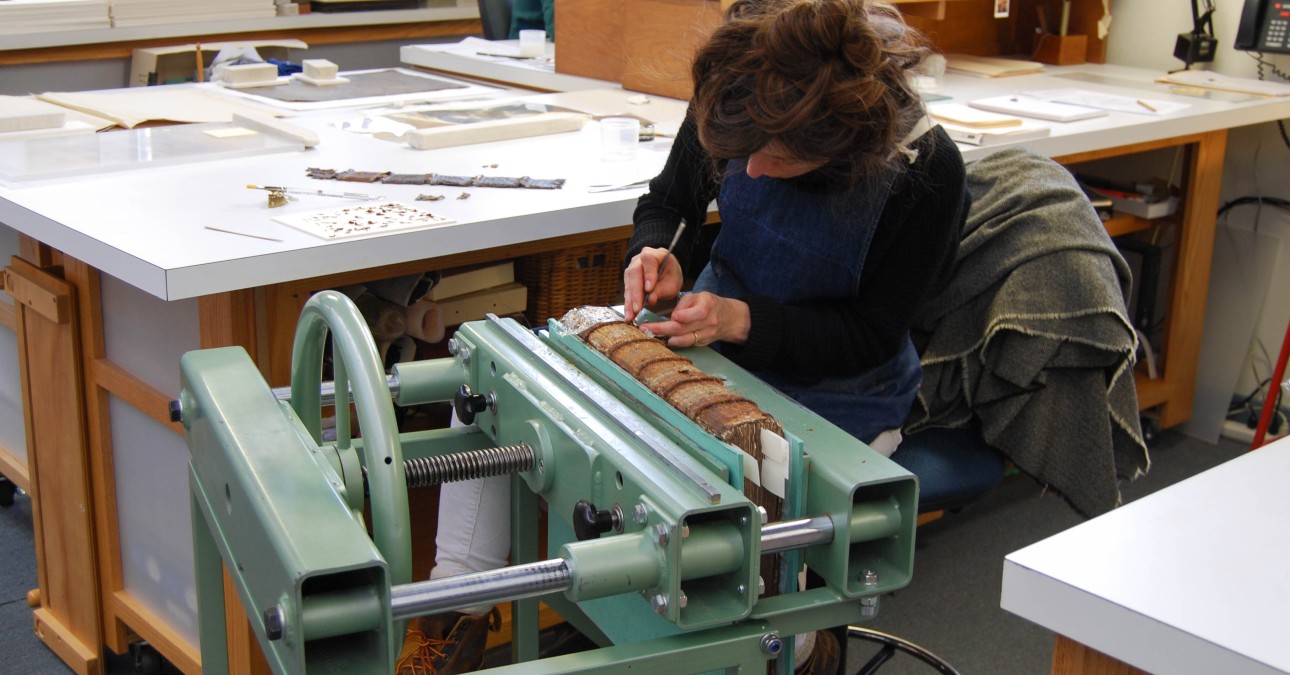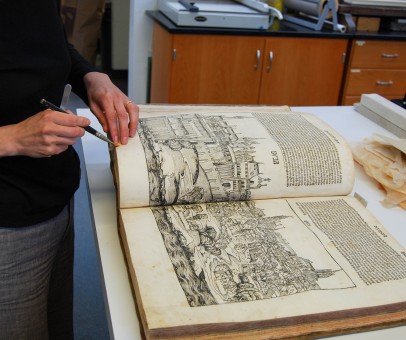
Treatment FOCUS: State Library of Pennsylvania's Nuremberg Chronicle
Published in 1493, the Nuremberg Chronicle is part Biblical paraphrase, part world history.
Modeled on the “Six Ages of the World” outlined by Augustine several centuries earlier, the book traces human history by relating it to the Bible. Printed in both Latin and German, it features language taken from many sources (a common practice at the time), and is considered one of the most encyclopedic compilations of its time.

Surface cleaning the pages.
The Chronicle is notable for incorporating over 1,800 woodcut illustrations, integrating the figures into the text in novel ways. The book’s histories are punctuated by cityscapes, often spanning two pages and varying in accuracy. Depictions of families also span pages, lineages traced horizontally with stretching vines. There are numerous illustrations of famous Biblical and secular figures, all depicted in 15th-century garb. The imagery is thought to be influenced by Albrecht Dürer, who worked at the shop where they were created.
The State Library of Pennsylvania recently brought a German language version of this book to CCAHA.
The front board of the cover was detached and the spine leather was desiccated and cracked, partially exposing the sewing supports and spine folds. The book’s sewing structure was deteriorating, rendering parts of the text block detached.
Surface cleaning the pages.
CCAHA Conservation Assistant Amber Hares treated the volume. After lifting the leather at the spine, she consolidated and lined the spine with wheat starch paste and mulberry paper, and reinforced and extended the sewing supports with ramie fiber tapes. Detached sections were then resewn to the text block using linen thread. She reattached the front board and reinforced the attachment of the back board by adhering the ramie fiber tapes and extended spine linings beneath the leather on the boards. The spine was rebacked with cloth and mulberry paper. Hares also cleaned the leaves of the book to reduce surface dirt and mended vulnerable tears.
